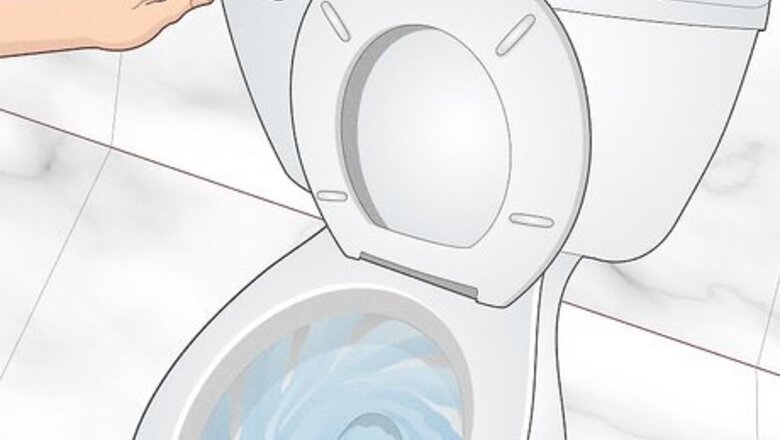
views
- Red stains are produced by excess iron in your water. Use a commercial cleaner and a Magic Eraser if necessary.
- Pink, yellow, and orange stains are caused by airborne bacteria. Any bleach-based cleaner will solve the issue quickly.
- Black and green stains are mold. If these stains develop, it’s a sign you need to clean your toilet more often.
Flush infrequently used toilets daily.
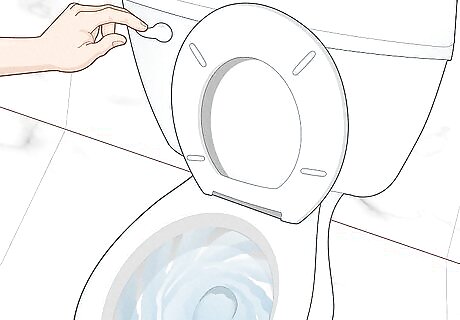
Regular flushing prevents pink bacteria stains from setting. You’ve seen those nasty-looking stains in old, unused toilets, right? Flush any guest toilets or toilets in secondary bathrooms every day to prevent those! If you have an old toilet that you just don’t use at all, consider turning the water off, giving it a good cleaning, and letting it dry out to avoid stains and the need to flush it. Repeated flushing won’t help if you have hard water stains, which are usually reddish, or if you have discoloration from bacteria (which causes pink, yellow, or orange stains).
Clean your toilet weekly.
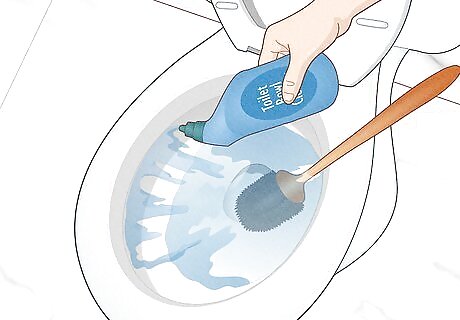
A regular cleaning schedule will help prevent stain buildup. Use a toilet bowl cleaner and a toilet brush to scrub out the bowl. Wipe down the outside surfaces of the toilet with a disposable disinfectant wipe while you’re at it. If you share the toilet with several people, especially kids, clean it every 2-3 days instead. Flush the toilet one more time to rinse your brush clean before putting it back on its stand.
Let toilet bowl cleaner sit in the bowl.

This can prevent stain-causing bacteria from growing. Spray any commercial toilet bowl cleaner around the bowl of the toilet, from just under the rim and downwards. Let it sit until you need to use the toilet again, then gently swish the water in the bowl around the sides of the bowl using a toilet brush and flush.
Scrub the bowl with vinegar monthly.
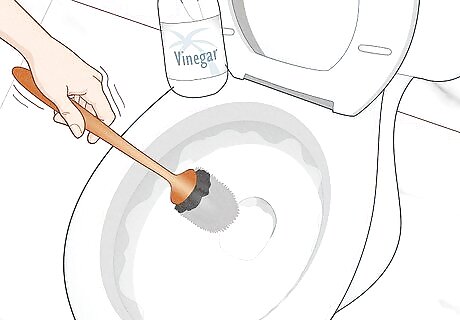
Vinegar prevents limescale deposits and water rings from appearing. Pour about 3 cups (0.7 L) of vinegar into the bowl, making sure to cover all sides of the bowl as you pour it in. Let it sit for a while, then scrub the bowl thoroughly with a toilet brush and flush the toilet. If you don’t want to use vinegar, lemon juice is a good substitute. Vinegar is most efficient on black or green stains, which are usually mold, but also works on hard water stains and bacteria stains (usually pink or yellow). It’s not great for red rust stains, though. Eduardo Peralta is a house-cleaning specialist and manager of a cleaning crew. For pesky rust stains, he recommends Magic Erasers: “Scrub and rinse with soap. If rust persists, use a Magic Eraser. Wet the magic eraser with mildly diluted bleach or spray bleach on the area and scrub in circular motions.”
Spray colorful bacteria stains with bleach.

Any brightly-colored stains will melt with a spritz of bleach. Mix 1-part bleach with 3-parts water in a spray bottle. Whenever you spot any yellow, pink, or orange rings or stains, spray them with the bleach solution and wait 20 minutes. Flush the toilet and the stains should come right out. If the stains don’t go away, scrub the spot with a toilet brush. These bright stains that appear out of nowhere are caused by bacteria in your toilet bowl. This is super common and the bacteria is harmless, so don’t worry.
Clean the tank twice a year.
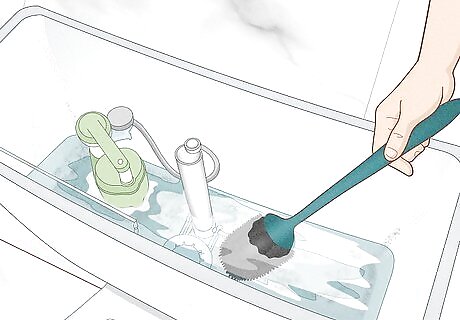
A dirty toilet tank can lead to rust, mold, and mildew stains in the bowl. To clean the tank, start by shutting off the water valve and flushing the tank to empty it all the way. Fill the tank with vinegar up to the overflow valve and let it sit for 12 hours. Flush all the vinegar out, then scrub any remaining grime out of the tank using a scrub brush and a disinfectant spray that doesn’t contain bleach. Vinegar helps remove mold, mildew, and hard water mineral deposits from the tank. It also helps clean rust off any metal parts in the tank. All of these things can cause staining in your toilet bowl if you let the tank get too dirty. Never use bleach or cleaners that contain bleach to clean the inside of the tank. It is very corrosive!
Use non-corrosive tank tablets.
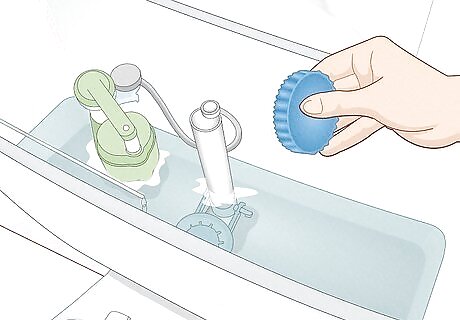
Tank tablets fill the toilet bowl with cleaner every time you flush. Tank tablet cleaners are a phenomenal way to keep your toilet clean without putting a ton of effort in. Pick up any commercial tank tablet cleaner and follow the instructions—typically you drop a tablet in the tank once a month. These tank tablets can kill stain-causing bacteria from growing as well as keep mold and mildew away. Daniel Olin is a home cleaning specialist who runs his own cleaning company. He says, “There are plenty of products available that automatically dispense bleach and detergents into your toilet bowl or into your water via the upper deck. Get one of those auto-dispensing products to save a lot of cleaning time.”
Coat the bowl in polymer-based car wax.

Stains can’t stick to the slick surface after you wax it. Make sure to clean any existing stains first, then shut off the water valve and drain the toilet as much as possible. Dry the bowl thoroughly with a cotton rag, then use another cotton rag to rub the car wax all over the bowl. Let it sit for at least 10 minutes before you fill the toilet with water again. The wax coating can last for up to 6 months or so. Reapply it twice a year to keep those pesky stains away!
Clean the bowl with Teflon.
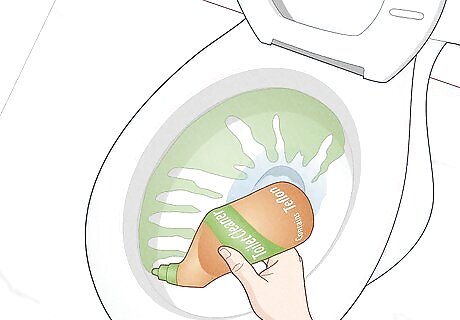
Toilet cleaners that contain Teflon protect the surface from all stains. Squirt some of the Teflon-based cleaner all over the inside of the toilet bowl and scrub it clean as you normally would. Clean your toilet regularly with the surface protector to keep the bowl coated and stain-free.
Install a water softener or iron remover.
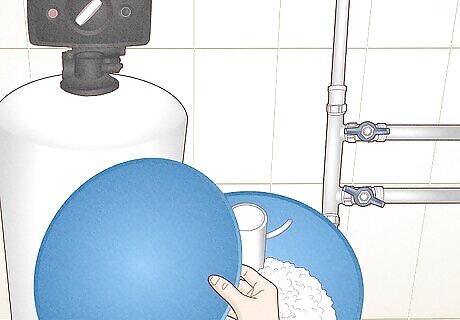
To permanently remove colorful stains, treat the problem at the source. Reddish stains and rings are rust, and they’re usually caused by excessive levels of iron in the water. Colorful pink, yellow, or orange stains are normally caused by harmless bacteria. To prevent these stains, contact a plumber to have your water tested so they can install a softener or iron remover for you. To be clear, excessive rust and color-causing bacteria are almost always totally harmless. Iron in water is a sign of hard water. This isn’t a big deal, most cities have hard water. It’s perfectly safe to use and drink (in fact, the minerals in hard water are good for you), but it can cause annoying water stains.

















Comments
0 comment